Points of interest are concentrated in three main streets:in the pedestrianised Calle de Las Damas, you can admire the old fortress Fuerte Del Homenaje (nicknamed "Fortaleza"), the Casa de Bastidas and the Palacio de los Capitanes, the Casa de Ovando, which houses a superb hotel, and its famous Gothic-Isabellian portal. Calle Isabela la Catolica is home to the cathedral of Santa Maria la Menor, built in 1518 and the oldest in the Americas (an emblematic monument on the island), the Palacio de Borgella, the imposing ruins of the San Francisco monastery, the Casa Del Duarte and the Church of Santa Barbara.
Named Nueva Isabela after Queen Isabella of Castile, Spain, the first city in the New World was founded on 4 August 1496 by Bartolomeo Columbus, Columbus' brother and governor of the island of Hispaniola. For the record, it was he who gave his name to the French island of Saint-Barthélemy. Built on the east bank of the River Ozama, it was destroyed by a hurricane and rebuilt in 1502 on the east bank of the river by Nicolas de Ovando. It was then named Santo Domingo de Gúzman, in honour of Saint Dominic de Guzmán, the founder of the Dominican order. A checkerboard plan was chosen for the construction of this city, which today is the recently restored district of the colonial zone.
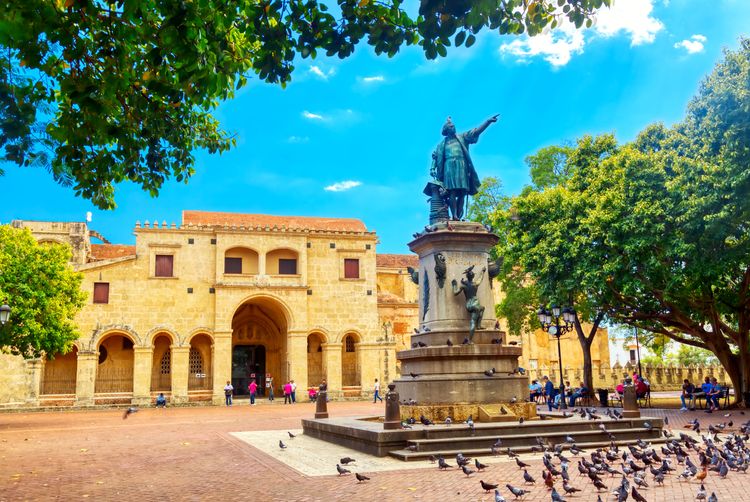
Statue of Christopher Columbus and basilica of Santa Maria la Menor in the colonial zone of Santo Domingo.
- © Nick N A / ShutterstockIn Calle Padre Billini, don't miss the Regina Angelorum church, which took over 200 years to build, the Los Dominicos church, home to the first university in the Americas, the Casa de Tostado, the Santa Clara church, the Casa de Las Monedas and, finally, the Tapao house and the legend of the mysterious masked man. The Alcázar de Colón, the first cathedral in America, the Ozama Fortress, the Las Casas Reales Museum, the National Botanical Garden, the Malecon and the Palace of Fine Arts are the seven wonders of the Dominican capital included in the "Representative List of World Cultural Heritage Treasures".
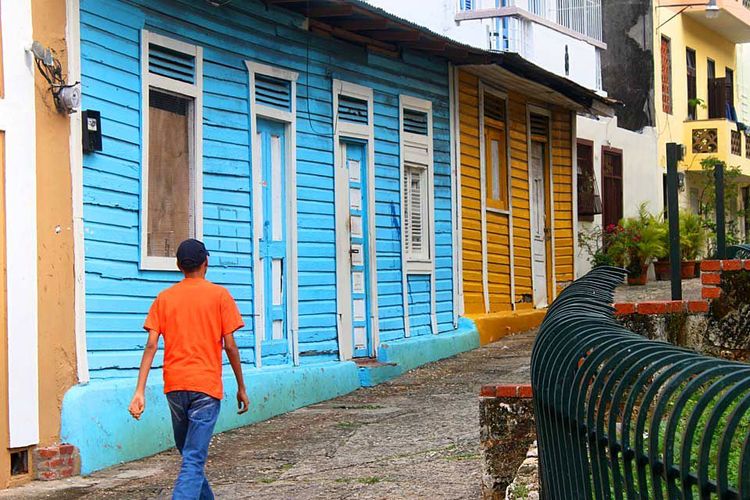
1. Santo Domingo Cathedral
Santa Maria la Menor, also known as Our Lady of the Incarnation and Catedral Primada de América, was the first cathedral built in the New World. Construction began in 1523 and was completed in 1541, with the exception of the bell tower, which was never built. It was initially built of rammed earth and covered with palms.
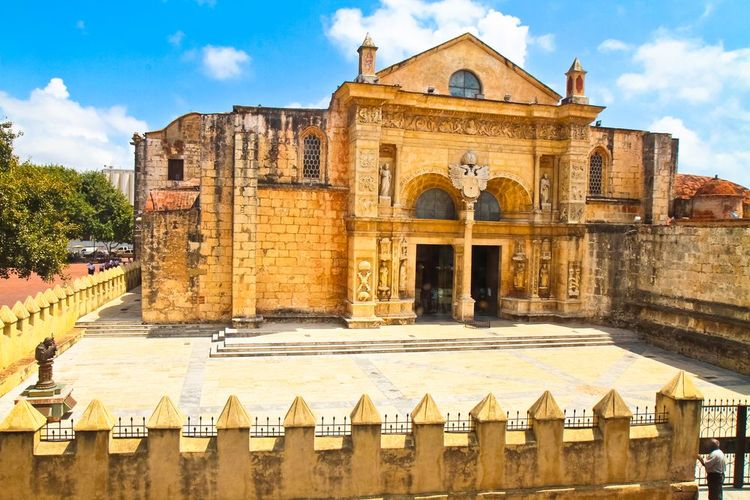
The floor is brick and the furniture is solid mahogany. The main portal is adorned with an enormous door weighing 2.5 tonnes, dating back to its creation and restored for the 500th anniversary of the discovery of America. The exterior is Renaissance in style, with Gothic vaults. Its façade of ochre coral stone and its priceless silver altar set it apart from the rest.
Practical information
📍 Location: F4F8+696, Callejón de los Curas, Santo Domingo 10210, Dominican Republic
👛 Admission: free
⏰ Times: the monument is open to the public every day from 9am to 4pm.
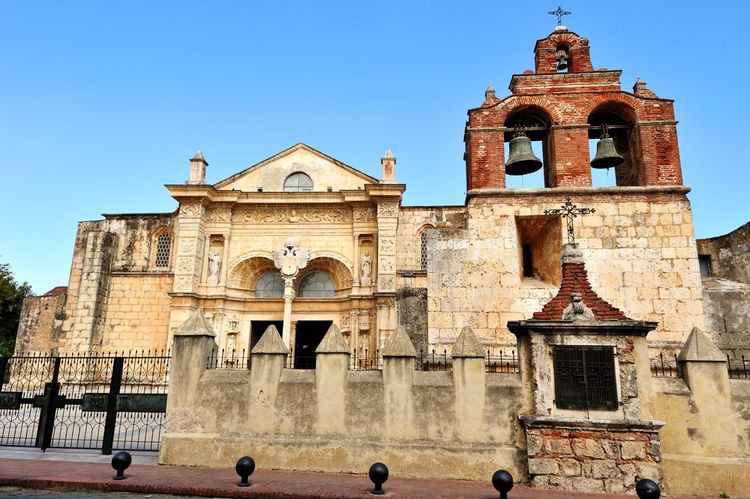
2. Plaza de Colon
The cathedral dominates the Plaza de Colon (formerly Plaza Mayor), in the middle of which stands the bronze and granite statue of Christopher Columbus, erected by the Frenchman Gilbert in 1887. The pleasant, shady plaza is lined with cafés, art galleries and cigar shops, and gives rise to El Conde, a long, lively pedestrian street with plenty of shops.
Where is it? It's here on Google Maps
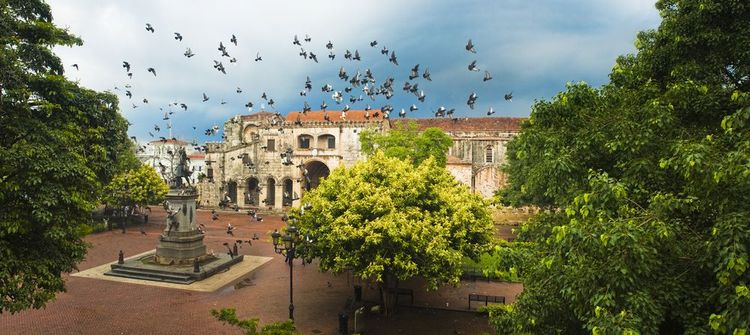
3. The Alcázar de Colon
This monument is an emblematic building in the colonial quarter of Santo Domingo, if not THE most emblematic. It was the first fortified palace in the New World. The architecture of the building is a clever blend of Spanish and Italian Renaissance, with a hint of Gothic and Mudéjar architecture. The Alcazar has been home to historic figures such as Cortés and Velasquez, both of whom came to the island to colonise neighbouring Cuba, Mexico and Peru.
Practical information
📍 Location: Plaza de España, C. La Atarazana 2, Santo Domingo 10212, Dominican Republic
👛 Admission: free
⏰ Opening hours: open Tuesday to Sunday from 10am to 6pm. Closed on Mondays.
🚌 How to get there: in the heart of the colonial zone, get off at the bus stop
Av. Independencia Proximo C/ Mariano Cesteros on lines C10C11, C10D or C10S.
👉 Website
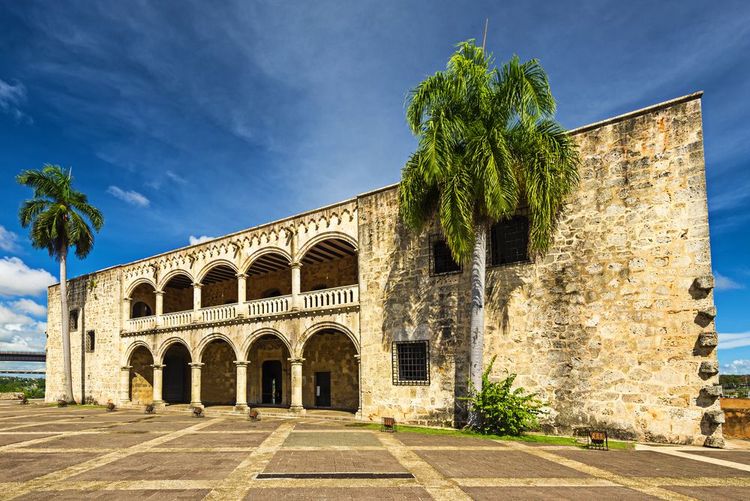
4. La Fortaleza Ozama
Built between 1502 and 1507 on the orders of Governor Nicolas de Ovando to protect the city from pirate attacks, Fortaleza Ozama was the first European fortress and the first military building in America. A stone wall separates it from the River Ozama, from which the building takes its name.
Access is via the famous Calle de las Damas, the first street in the New World. Inside, you can stroll through a vast garden featuring a bronze statue of Don Gonzalo Fernandez de Oviedo, a famous 16th-century chronicler who wrote the first history of the Americas.
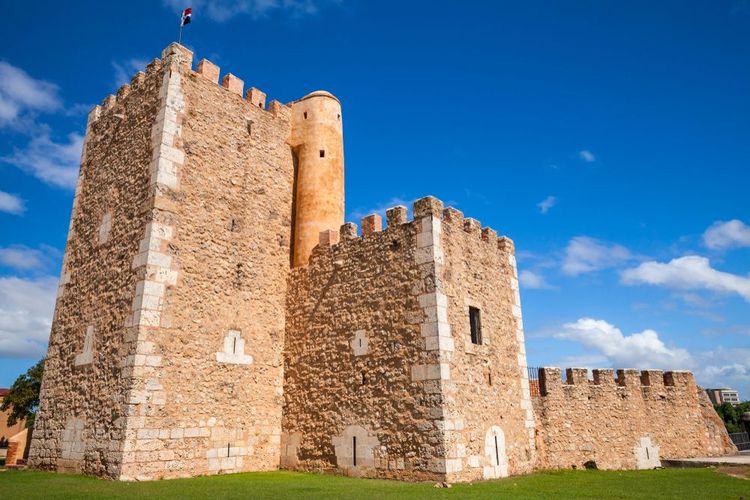
La Fortaleza Ozama
- © Evannovostro / ShutterstockThe complex is dominated by the Torre del Homenaje (Tribute Tower), a massive coral stone medieval keep. This square building dates from 1503 and contains a spiral iron staircase. From its 18-metre height, you can see the whole city and the river. Ships entering the port used to be greeted from the top of this tower, hence its name, the Homage Tower. In 1937, the dictator Trujillo reinforced it with a crenellated rampart and used it as a prison until 1970. At the rear, the Carlos III gate is one of the oldest entrances to the fortress, which was never taken by force!
Practical information
📍 Location: C. Las Damas 1, Santo Domingo 10210, Dominican Republic
👛 Price: 70 Dominican peso, about $1.50.
⏰ Opening hours: open Tuesday to Sunday from 10am to 6pm. Closed Mondays.
🚌 Getting there: right in the heart of the colonial zone, get off at the bus stop
Av. Independencia Proximo C/ Mariano Cesteros on lines C10C11, C10D or C10S.
👉 Website
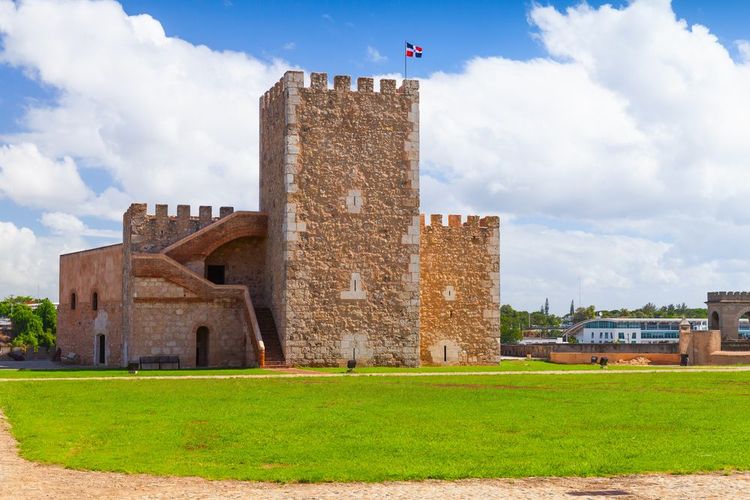
5. The monastery of San Francisco
Built in 1512 by monks of the Order of Saint Francis, the monastery of San Francisco was both the first monastery and the first centre of higher learning (1538) in the New World. The Franciscans (and not the Dominicans) were the first religious to settle on the island of Hispaniola. They arrived on the second voyage of Christopher Columbus.
Partly burnt down in 1586 when Sir Francis Drake destroyed the city, it barely survived an earthquake in 1673. Despite this, the impressive and moving ruins are still a popular place to take a stroll.
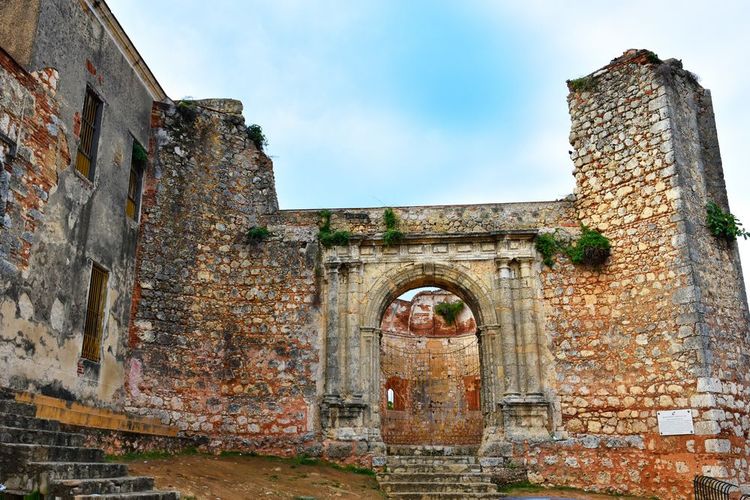
Numerous concerts and cultural events are held at the foot of the building, which is surrounded by vast green spaces. A free concert is held in front of the San Francisco monastery every Sunday, come rain or shine! The old well and a reservoir where water was stored for the town's residents have survived.
The site of the tomb of Alonso de Ojeda, one of the most intrepid captains of the conquistadores, can be seen beneath the ruined vault. Legend has it that, in an act of extreme humility, he asked to be buried at the entrance to the convent so that everyone could walk over him!
Where is it? It'shere on Google Maps
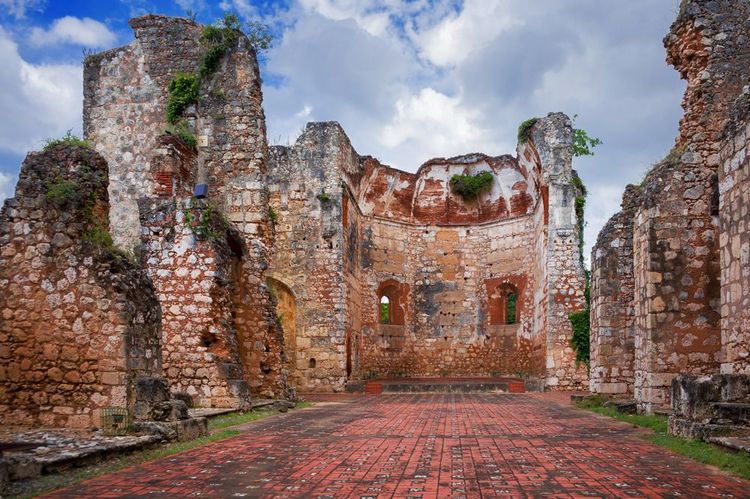
6. La Casa del Cordon
There are many 'Houses of the Cord' in the Hispanic world. Commissioned in 1502 by Don Francisco de Garay, a fellow traveller on Christopher Columbus's first expedition, the Casa del Cordon in Santo Domingo was the first stone house in the New World. The son of the great admiral Diego Columbus and his wife Maria de Toledo lived here before the Alcazar de Colon was built.
It was here that the ladies of the court gathered in 1586 to donate their jewels to pay the ransom demanded by the English privateer Sir Francis Drake in return for liberating the sacked city. The name of the house comes from the symbol of the Franciscan order of monks: a rope belt carved on the façade.
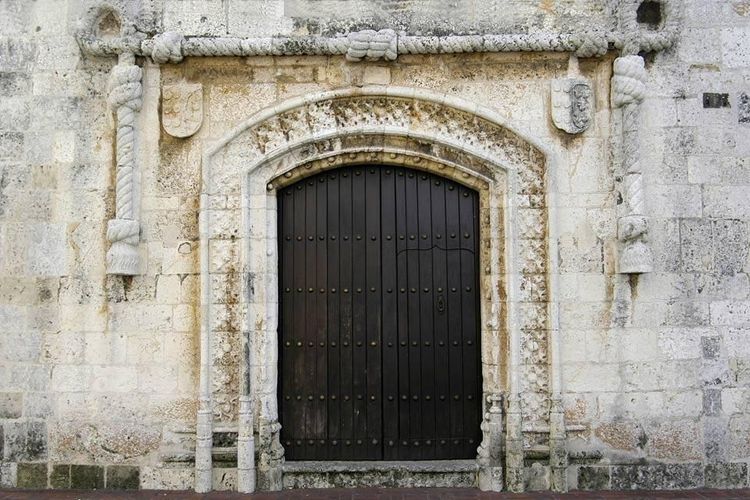
Located on Calle Isabel la Catolica opposite the Palace of Telecommunications, the Casa del Cordon now houses the Dominican Popular Bank, but don't hesitate to push open the sumptuous wooden door to discover its treasures: there is a magnificent collection of furniture from the colonial era, as well as a pretty patio. The only condition: it's forbidden to take photos!
Where is it? Casa del Cordon is located at 214 Calle Isabel la Catolica, in the heart of the colonial zone. It's here on Google Maps
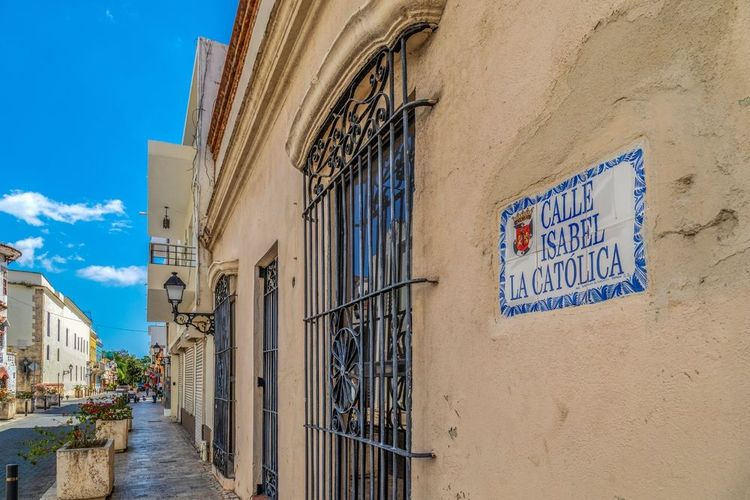
Our favourite hotel in Santo Domingo
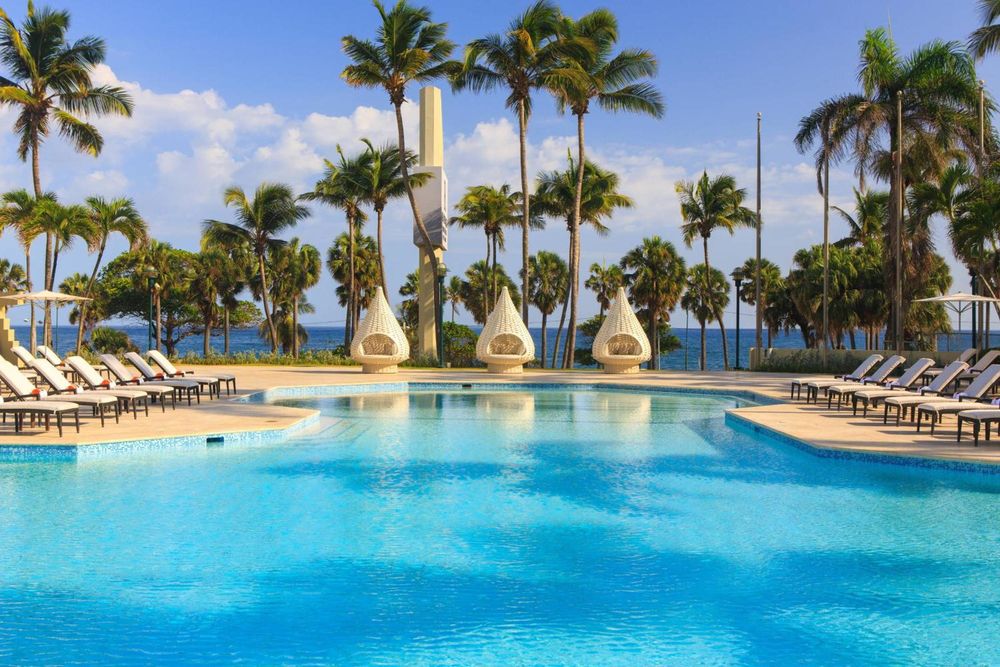 St-Domingue
St-Domingue





